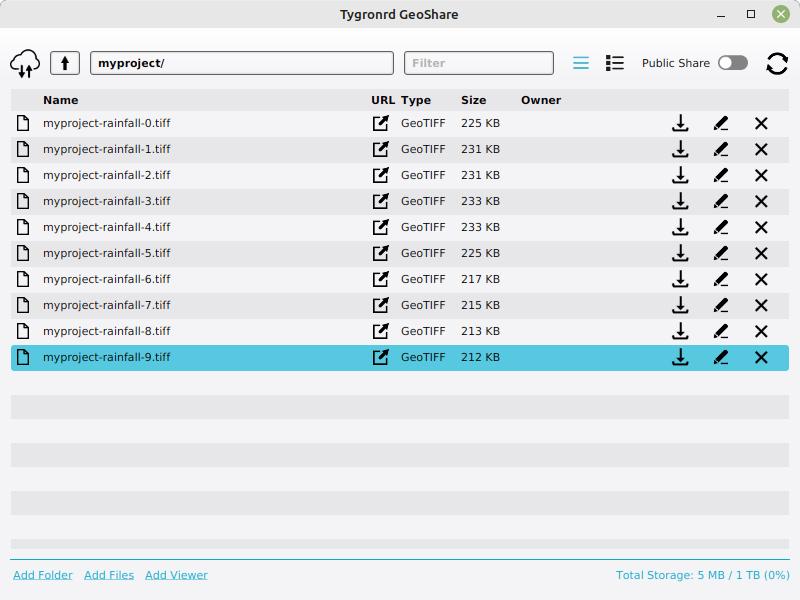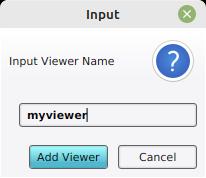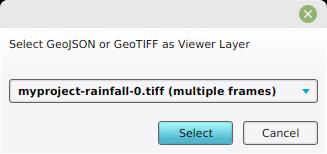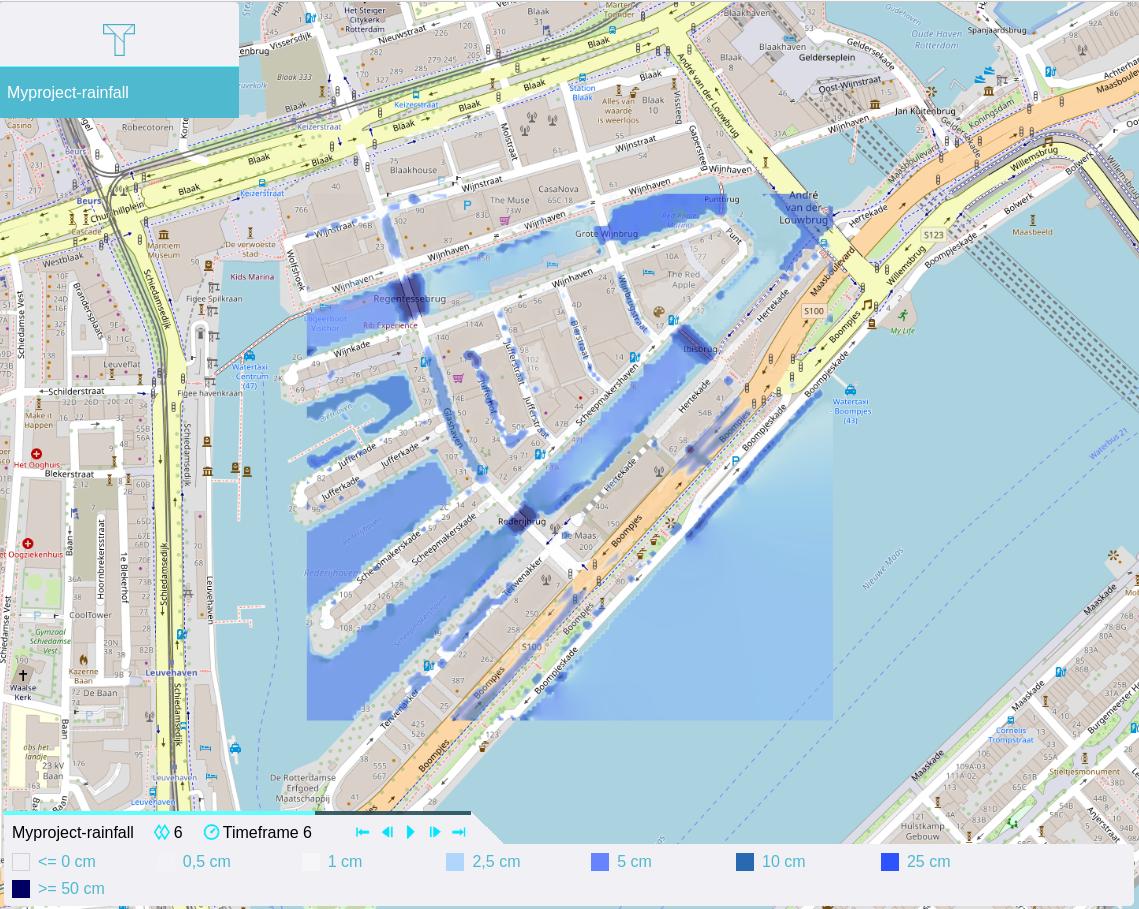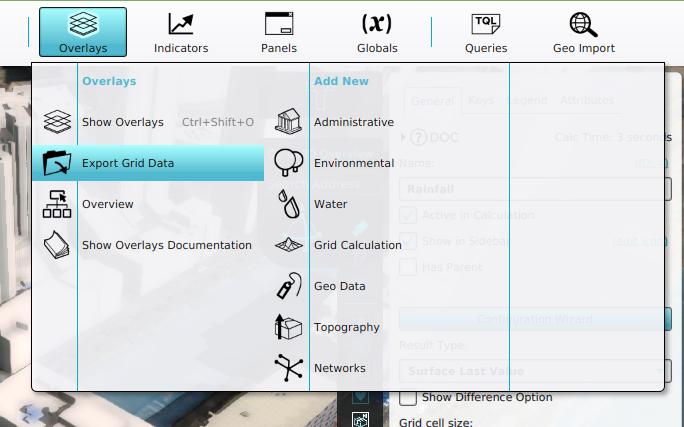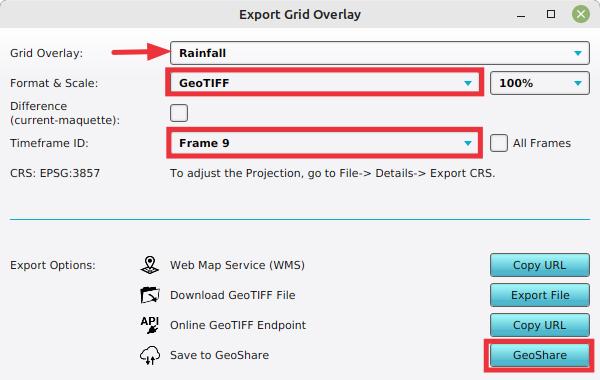How to create a GeoShare Viewer: Difference between revisions
Jump to navigation
Jump to search
| Line 25: | Line 25: | ||
==Multiple timeframes== | ==Multiple timeframes== | ||
As can be seen from the first how-to, Grid Overlays with multiple timeframes are automatically recognized by the ''layer-add'' step of adding a GeoShare. This is recognized using the following naming convention: <code>name-##.format</code> | As can be seen from the first how-to, Grid Overlays with multiple timeframes are automatically recognized by the ''layer-add'' step of adding a GeoShare. This is recognized using the following naming convention: <code>name-##.format</code>. Other formats for automatically recognizing these are not yet supported. When uploading your own GeoTIFFs that represent multiple timeframes, take this naming convention into account before uploading them. | ||
{{article end | {{article end | ||
Revision as of 15:57, 29 March 2024
A GeoShare Viewer allows for the sharing of geographical data, most notably the results of calculations, via an easily sharable url without requiring the recipient to have an account for the Tygron Platform. Instead, the results are presented as a web viewer.
How to create a GeoShare Viewer:
- In the Ribbon, click on the GeoShare link in the upper right.
- With the GeoShare opened, navigate to a folder that contains GeoTIFFs.
- If you do not yet have GeoTIFFs, see this section.
- At the bottom of the GeoShare, click on "Add Viewer"
- In the prompt which appears, enter the desired name for the viewer
- In the next prompt, select the desired GeoTIFF(s)
- The viewer can now be opened by clicking on the link. The viewer will open in the web browser.
- The url of the web browser can be shared by copying it from the web browser's address bar.
-
Provide a name for the GeoShare Viewer
-
Provided option to add multiple GeoTIFFs at once.
-
GeoShare Viewer with play button to animate GeoTIFFs.
How to create a GeoShare Viewer:
- In the Ribbon, select Overlays to show the list of all Overlays in the Project.
- Select the Grid Overlay the results of which you wish to share.
- Click on "Export Grid Data".
- In the prompt that appears, opt to save the last timeframe to the GeoShare
- The GeoShare window will remain open with the saved GeoTIFF visible
-
Exporting the last frame of a Grid Overlay to the GeoShare
-
Exporting all timeframes of a Grid Overlay to the GeoShare
Multiple timeframes
As can be seen from the first how-to, Grid Overlays with multiple timeframes are automatically recognized by the layer-add step of adding a GeoShare. This is recognized using the following naming convention: name-##.format. Other formats for automatically recognizing these are not yet supported. When uploading your own GeoTIFFs that represent multiple timeframes, take this naming convention into account before uploading them.
